Boring Ads Can Be Effective Too.
Cringe personal injury lawyers are on to something.
For anyone new here, I’m the founder of Woo Punch, a brand consultancy rooted in evidence-based brand design. I write about the evidence that debunks brand purpose, differentiation, brand love, loyalty marketing, customer personas, color psychology, mission statements, customer engagement, AdTech, and “hustle culture.”
Want to chat about your brand? Schedule a free intro call.
I live in Milwaukee, WI—where David Gruber is the undisputed king of advertising.
Gruber saturates the market. And not just the personal injury lawyer space—every category. If you drive through Milwaukee, odds are you’ll see him 10 times before you see your exit.
But Gruber hasn’t come out of nowhere like the new kid in town with a beard—Russell Nicolet—did a couple years ago…
Gruber’s been at it since the late 1990s.
Gruber’s awkward presence hits you like a ton of bricks.
For Breaking Bad fans, he’s Wisconsin’s Saul Goodman. A caricature. A trope. Every metro area in the U.S. has four or five firms just like his. He’s the textbook personal injury lawyer: overexposed and cloying.
And yet…it works.
There’s no question Gruber’s ads are effective. Measuring ad performance is notoriously messy, and most “proprietary models” are just expensive guesswork. But Gruber simplifies the equation: either his campaigns are wildly successful, or he’s been throwing millions into the void for over 25 years. And he’s still standing.
What’s fascinating is that his ads break every rule we’re told to follow. They lack emotional appeal, entertainment value, or any clear differentiators. They are the antithesis of a Cannes “Grand Prix” winner. Advertisers write them off as amateurish.
But they work. So, what can we learn?
How Can Brands Cut Through, Even With Boring Advertising?
1. Be distinctive.
Gruber’s latest out-of-home campaigns feature a jarring neon yellow border against a deep navy backdrop—a bold departure from the forgettable blue-and-silver palette of years past. It grabs your attention, even if you don’t want it to.
But even before the color change, Gruber’s billboards always featured the same recognizable elements: his face, and the now-iconic tagline, “One Call, That’s All.”*
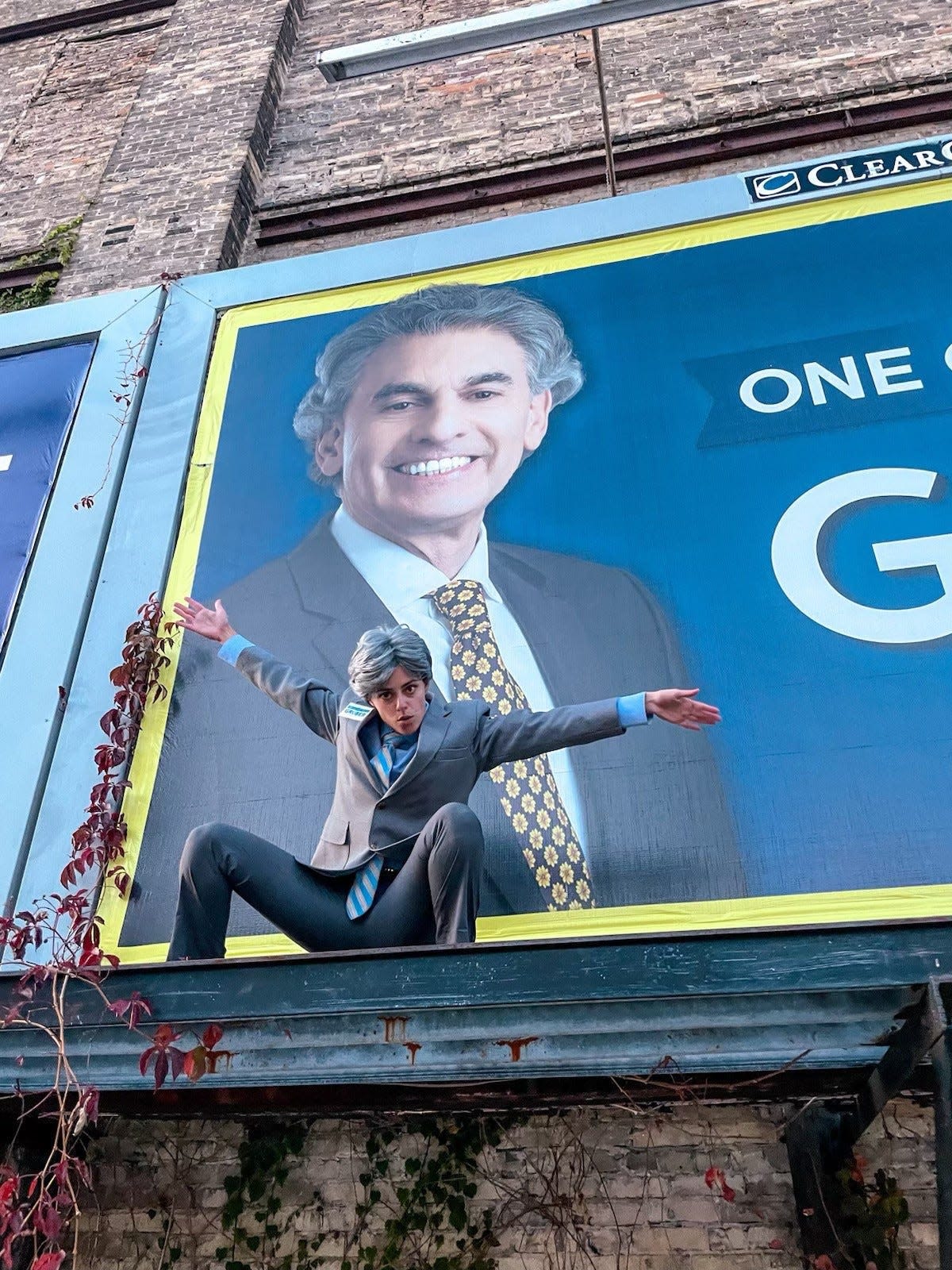
If your brand isn’t unmistakable, you're not just climbing uphill—you’re running in place and throwing away ad dollars. Confused customers don’t buy; they move on. Distinctiveness isn’t optional; it’s your sharpest edge in a crowded market.
So drop the temptation to be clever or emotionally resonant at the expense of recognition. Entertainment fades. Clever lines get lost. But a brand that fully owns its identity—even if that includes a clunky tagline or a quirky founder with a bad haircut—sticks.
*Fun Fact: Gruber doesn’t own the phrase, “One Call, That’s All.” Five other personal injury lawyers across the country legally share it—and most of them are friends. They’ve even taken trips to Vegas together. A fraternity of legal marketers, united by a four-word slogan and a shared belief in relentless brand saturation. Until one of them decides to expand their territory…
2. They are clear.
Gruber Law’s ads are clear about the category. Clear about what they do. And crucially, clear about who’s advertising. No wasted space. No message crammed in. The message is ridiculously simple: Injured? Gruber Law exists as an option.
As advertisers, we tend to celebrate the opposite—billboards that hide the logo, entertain, or get a little PR on LinkedIn. But Gruber’s dominance in Milwaukee suggests that clarity, saturation, and consistency beat creativity.
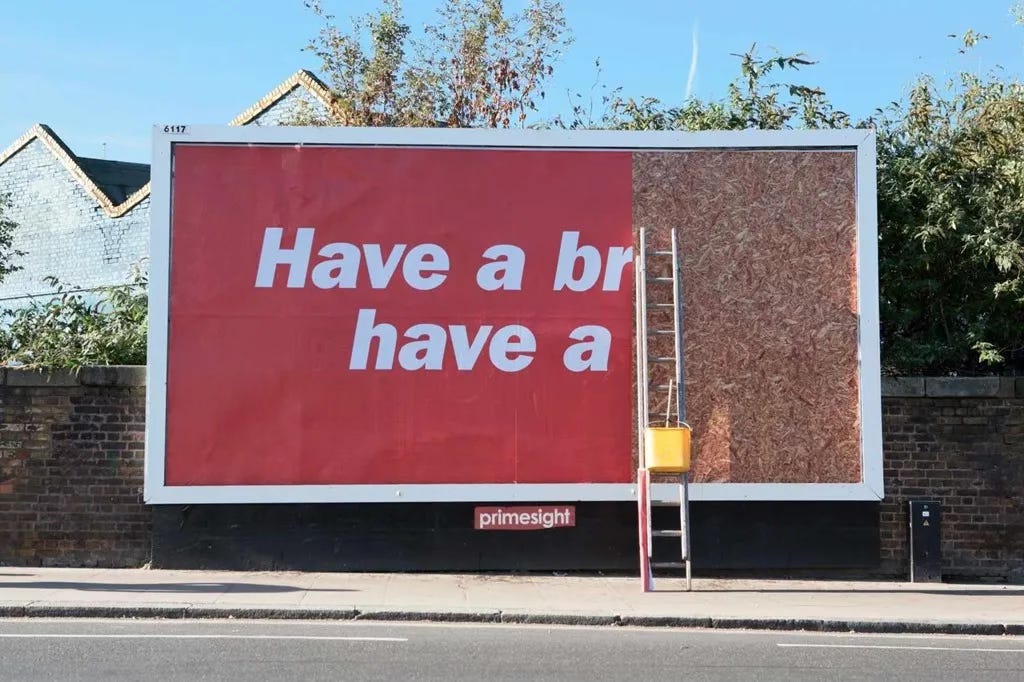
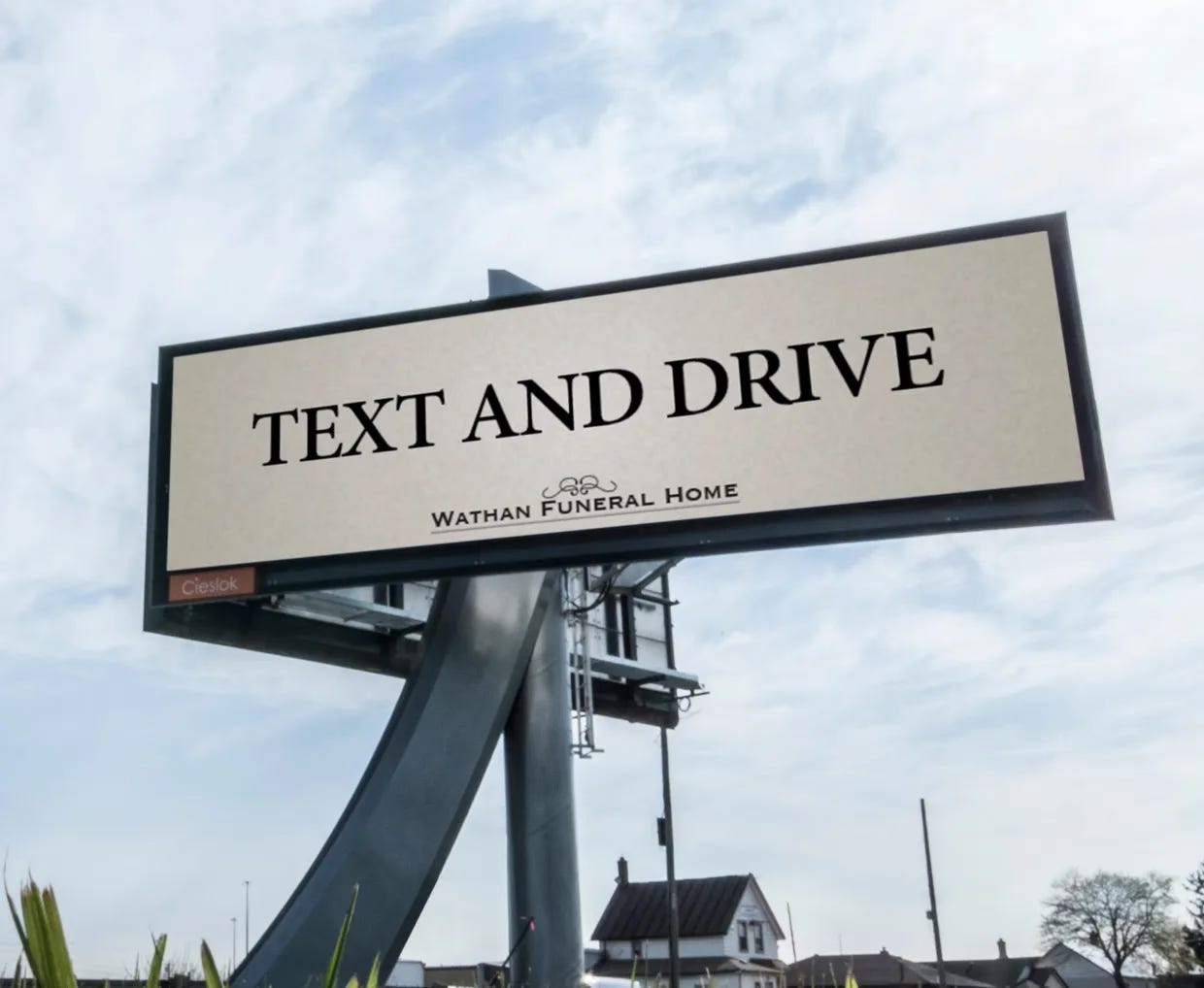

If people don’t know what you do or who you are, they can’t choose you. It’s that simple. Clarity comes first. Creativity comes second. Especially on billboards, where there’s limited room for both. David Gruber gets this. He doesn’t even attempt creativity.
3. They are consistent.
Gruber’s been flooding airwaves and highways for almost three decades. And aside from the recent color tweak, almost nothing has changed. Still, no media training for the face of the brand. No pivot to storytelling. No award-winning creative agencies have been contacted.
Gruber just shows up—awkward delivery, stiff posture, and all.
Clarity Saves Ad Dollars.
Some argue that Gruber’s blunt, to-the-point billboards are a luxury—affordable only for brands with the budget to plaster a city with ads. They argue small brands have to earn fame through emotional storytelling or radical creativity—or risk fading into the noise.
But that logic assumes people are actually paying attention.
They’re not.
The average driver isn’t processing your brand essence or detecting your differentiator. They’re glancing—half-aware, speeding by. In that fleeting half-second, clarity isn’t optional. It’s all you get.
So yes—make the logo bigger. Limit yourself to 25 characters. Blow up the font size. Say what you do. Show the product. Build a distinctive identity.
Be unmistakably you first. Then, if there’s space left, entertain. Tug a heartstring. Demonstrate your difference.
Gruber gets it. His ads are crystal clear, and his brand is impossible to confuse with the competition. You don’t need to guess the category. You don’t need to wonder what he wants. You see his face, you clock the color scheme, and you hear Gruber’s cadence in your head: “One call…That’s all.”
No mystery. No nuance. Just brute-force brand recognition.
Gruber’s ads obey the most brutal truth in advertising:
If they don’t know it’s you, it doesn’t matter what you said.



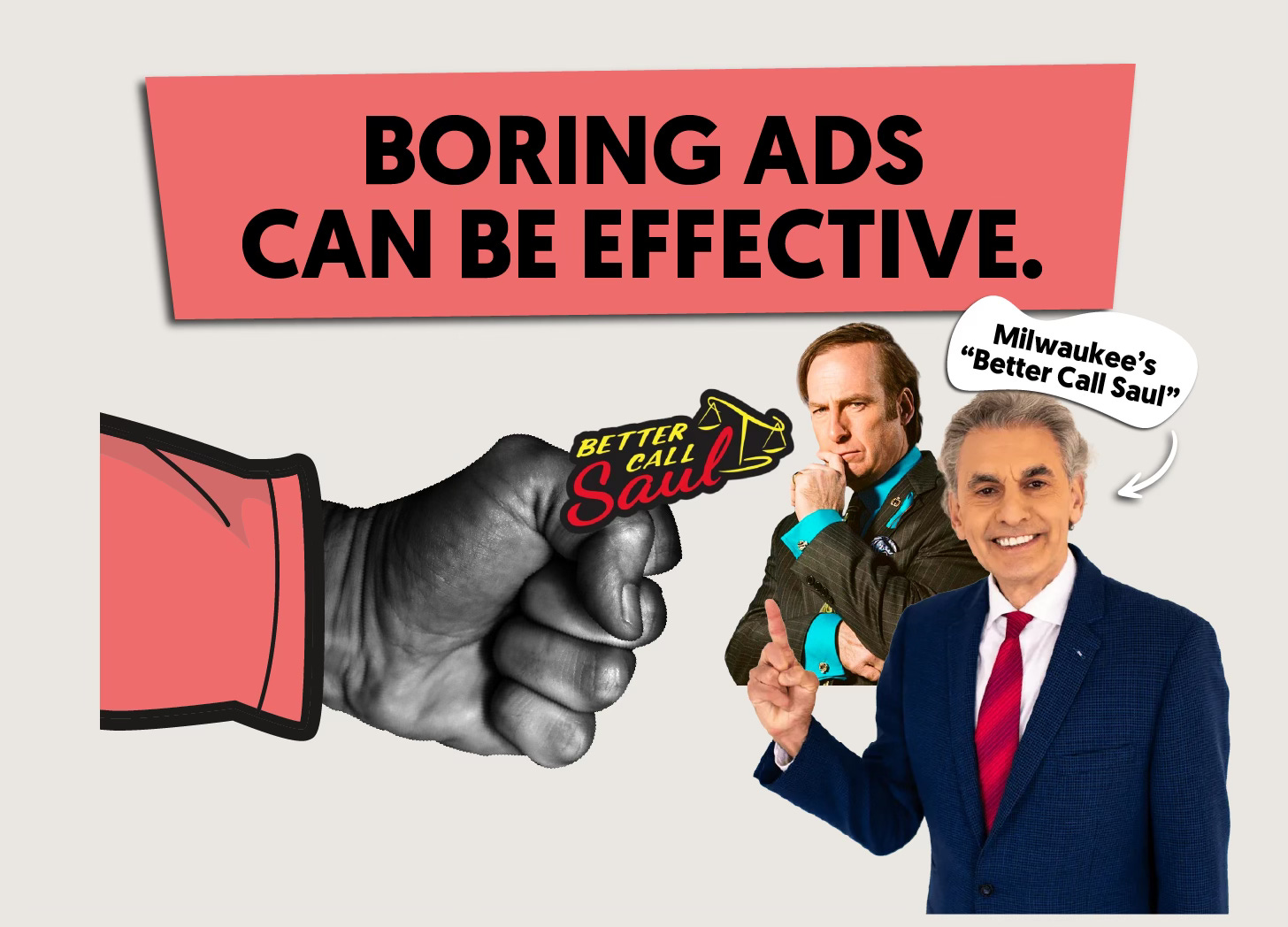

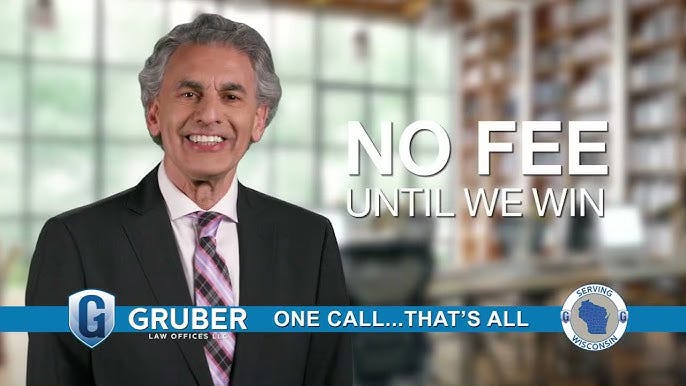
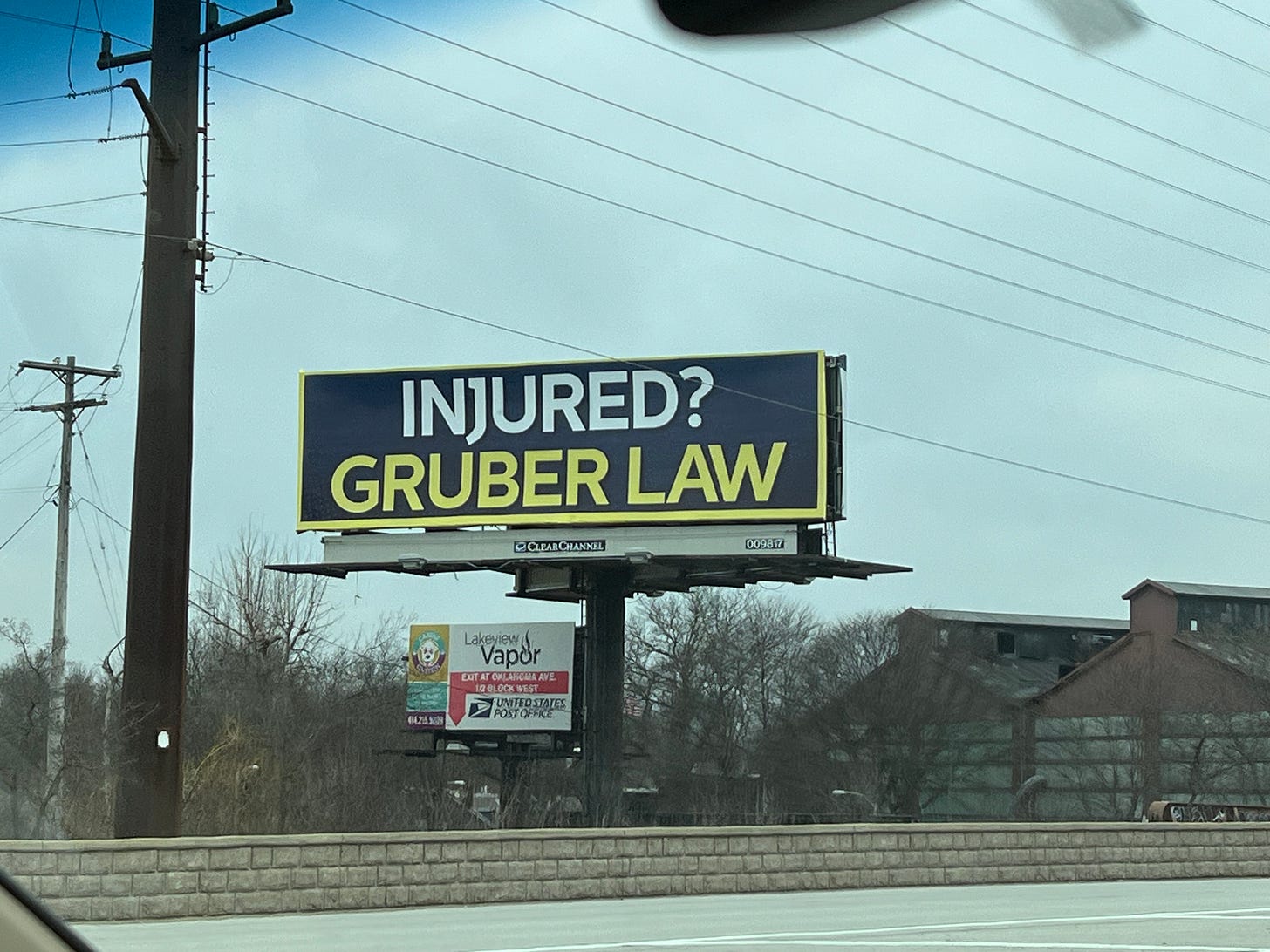

Lovely post, thank you.
Most companies really do underestimate that mere repetition of the same message, albeit in different ways, does drive revenue.
This type of advertising may not work for every category, but it does work for this one.
Best bit of thinking on how advertising works—and doesn't work—that I've read in a long, long time. Advertisers and advertising people have allowed themselves to become mere
stylists. Everything has become beautiful, tidy, sophisticated and oh so clever—and entirely, utterly invisible.